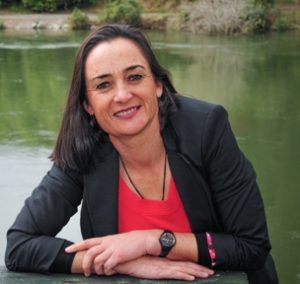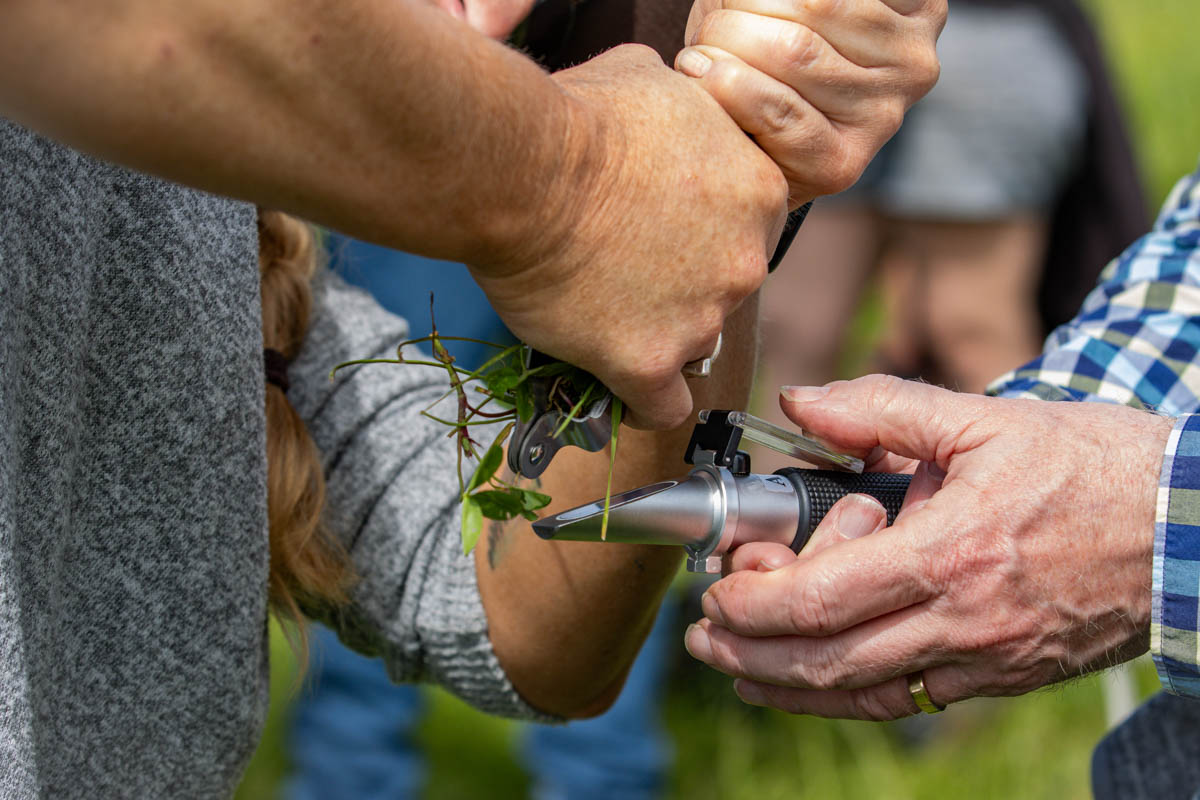Glenys Christian
Landcorp’s (Pamu) move to stop feeding cows palm kernel is now worth $160,000 a year in premiums to its Canterbury dairy farms supplying Synlait, its head of environment, Alison Dewes told the Environmental Defence Society (EDS) Conference in Auckland in early August.

It would have some planning in place by December to move to farming under ecosystem health limits.
During the session on freshwater reform she concentrated on the issues farmers face in interpreting different regulations.
“I will take you on a deep, dirty and challenging dive,” she told delegates at the annual conference where she spoke on the subject: What do limits mean on the ground?
“But I’ll come out at the end with some good stories,” she promised.
Pamu, which farms 158,000 hectares and manages 214,000ha for others, including iwi, had made a significant shift to dairying over recent years, which meant profitability went up and down quickly. In 2014, it adopted the strategy of farming to the highest levels of excellence and sustainability as well as transitioning from volume to values.
It had converted six farms to dairying in two of Canterbury’s red zones in the five years leading to 2017. In 2013, Pamu ran 2974 cows on 800 effective hectares at 3.63 stock units per hectare. An average of 93 kilograms of nitrate was leached per hectare on flood irrigation land or dryland with 18 micrograms of nitrate per litre of groundwater leaving the root zone.
Cow numbers have steadily grown to reach 5186 grazed on 1978ha in 2017. But the stocking rate, which is still reducing, is down to 2.46 cows/ha. With pivot irrigation used since 2015, nitrate leaching rates dropped to 61kg/ha groundwater with the switch, already reaching the 2035 target. But the 2017 level of groundwater N was now 35mg/l groundwater, having reached 36 in the two previous years.
‘You can’t talk about fiddling round the edges in some sensitive catchments.’
All the farms have farm environment plans (FEP) in place and good management practice (GMP) is carried out with an A rating FEPs from Environment Canterbury and a long-term consent.
But in a later panel session she said GMP alone would not get farming to the required level of environmental compliance. Land use might need to change, she said.
“You can’t talk about fiddling round the edges in some sensitive catchments.”
She questioned which of the limits farmers’ increasingly needed to conform to needed to be met, from the range of demands related to ecosystems, people, social licence and animal wellbeing.
“It’s confusing to navigate your way through,” she said.
“These are quite complex challenges.”
In Canterbury, she said some were regional plans where grandparenting underpinned nutrient allocation.
“This rewards polluters and penalises innovators. This is a challenge for us because if we make changes our land values decline.”
There was declining water quality and continued nitrification trends in shallow aquifers and spring-fed streams but she questioned whether the wrong limits were being used as sub-zone plans were underpinned by nitrogen toxicity levels 10 times those needed for ecosystem health under the National Policy Statement on Freshwater.
“We believe we have to go to the ecosystem health level,” she said.
There were the highest rates in the world of some gastro-intestinal diseases which originated from animals.
Loss of biodiversity, which should have been protected, had seen the collapse of trout fisheries which was quite concerning. Flawed maths was a problem with models assuming attenuation of nitrate beyond the 60cm root zone while it was perhaps 15% less. There were legal issues around drinking water degradation which required protection.
Dewes questioned whether there had been fair representation when it came to zone meetings and formulation of FEPs and GMPs. These would only give five to 10% reductions at best which had already been counted.
There were ethical and complicity issues around worsening water quality over the last 10 years and the debt burden of land values being linked to polluting systems.
“There’s a lot of evidence that nitrogen is the canary in the mine for the bugs that come later,” she said.
“Nature tells us that water quality is declining. Can we be complicit and sit there and watch?”
If Landcorp had had its eyes wide open and looked at water quality trends it probably shouldn’t have converted some land to dairying.
Dewes questioned what groundwater N limit dairy farmers should be farming to as there were a range of limits and recommended levels in place. Under the Environment Canterbury GMP guide, Pamu could apply 40kg more N/ha, suggesting a 50-52mg/litre of groundwater level.
Meanwhile the grandparented ex-root zone level was 45-50mg/l, which was consented until 2035.
“So we can keep doing that for 30 years,” she said.
Pamu’s irrigation consent limit was 6.9mg/l while the Canterbury drinking water protection limit was 5.6mg/l. A level of 3.8mg/l was required for salmon hatcheries, which would mean Pamu’s Waimakariri farms would have to drop levels by 10 times. And the ecosystem health level was even lower at .44mg/l, which would require a 15-fold reduction.
“I get scared when I do those maths, and it takes a bit to scare me.”
At Hinds average annual nitrate nitrogen concentrations from 2000 to 2017 showed rising levels in surface water drains, and both shallow and deep groundwater.
“This is what nature is telling us. Do we need to delay any longer?”
She questioned whether there was likely to be any sign of abatement in the levels in deep wells.
“We’ve got quite a big problem with $120 million of farms down there.”
It would be challenging for Pamu to move to the lower ecosystem health level.
“Our land devalues by about 80% and we lose $44m off the bottom line,” she said.
“The other issue is irrigation consents because if we give up 77 tonnes of nitrogen across our farms that just goes back into the pie. There is no guarantee that will be saved from our rivers or farms.”
Other disincentives to change were that in the Waimakariri area a 93% drop in nitrate leaching would be needed to achieve the desired water quality status. There was the cost and uncertainty of land use change, as well as doubts as to where national policy was going.
“We’re casting forward 10 years and asking what does farming under ecosystem health limits look like,” she said.
“We haven’t got the answers yet but we need real-time monitoring. It might not have four legs and an udder – it might be something different and it might be using a whole lot less water and a whole lot less fertiliser.”
The plan to be in place by December would be based on modelling. Every paddock on each of its farms was mapped for soil type and with this information it could adapt its farming systems better to the capability of the land.
“We’re trying to move out of winter crops and reducing them where we can,” she said.
Soil levels of 96mg/l of groundwater N were seen under some crops but this was still permitted.
It was also looking at using a range of eight different forages, some of which were deeper-rooting, in a sward.
“It might look like a weed paddock,” she said.
Pamu also wanted to reduce use of chemicals and residues and there would be a transition to organics as well.
“We’re looking hard into regenerative agriculture,” she said.
Trial work had been carried out overseas, but Pamu wanted to put some science and rigour around the numbers in order to find out how to use less water and fertiliser in ways that were better for people, animals and the ecology.
“This is our poutokomanawa – out heartpost.”





